Strategies to Elevate Your eCommerce Business to the Next Level

E-commerce businesses are an important part of the modern economy, and understanding the best strategies is essential for long-term success. Having a solid plan in place can help you make the most of your eCommerce business, whether you’re just starting or looking for ways to expand your current business. With the right b2b eCommerce marketing strategies for your business in place, you can ensure that your eCommerce business continues to grow and thrive. Finding the best eCommerce web development services to help you strategize and elevate your business to the next level can be a great starting point.
You can use several eCommerce marketing strategies to drive more sales, create a better customer experience, and increase visibility. These include utilizing the latest digital marketing tools, leveraging data analytics to understand your customers better, optimizing your website for search engine optimization, and improving your customer service processes. By utilizing these eCommerce development solutions, you can improve the success of your eCommerce business and ensure that it remains competitive in an ever-evolving digital landscape.
Mobile-Friendly

Mobile friendliness is an important factor for any eCommerce business today. 52.2 percent of all website traffic is generated from mobile phones. Businesses need to ensure that their websites are optimized for mobile devices, as most people will access websites on their phones. Mobile-friendliness can elevate your eCommerce business to the next level in many ways.
Improves User Experience
Customers can easily access the website without having to deal with slow loading times or navigation difficulties. This will ensure that customers are more likely to stay on the website, browse through products, and make purchases.
Improve SEO
Search engine algorithms prioritize mobile-friendly websites, meaning businesses will have a better chance of ranking higher in search engine results. This can bring in more organic traffic, which can be a great source of potential customers.
Positive Brand Image
Customers are more likely to have a reasonable opinion of a business that has a website & is optimized for mobile devices. This can create trust and loyalty amongst customers, which can be beneficial for the long-term success of a business.
Customer Segmentation
By segmenting customers based on their behaviors, buying patterns, preferences, and demographics, a business can target each segment specifically, creating offers and marketing messages tailored to that segment. This gives customers a more personalized experience, leading to higher engagement and more sales. However, there are a few pointers that you should keep in mind as well:
Personalization
It can help a business stand out from the competition, as customers may be more likely to remember a business that provides them with a tailored experience.
Data
It’s important to consider each available data source, such as website user data, CRM data, and customer surveys. By collecting data from these sources, businesses can understand their customer base more clearly and create more effective segmentation.
Tools
Businesses should use personalization tools, such as personalized content, offers, and product recommendations. These personalized experiences can help to build customer loyalty and improve customer satisfaction.
Performance Tracking
Businesses should track the performance of their customer segmentation and personalization efforts, as this can help them identify improvement areas.
Businesses gain a competitive edge by utilizing suitable data sources, personalization tools, and tracking performance.
Upsell Strategy

Upselling is a key marketing strategy for eCommerce businesses to grow revenues and increase customer loyalty. Upselling generates around 10% – 30% of most of the eCommerce revenues. It involves offering customers additional product options that complement the product they initially purchased. Upselling helps to increase customer spend and can be used to introduce customers to new products and services.
Here are some pointers on how upsell strategy can elevate your eCommerce business to the next level:
Make sure your upsells are relevant
Offer upsells that complement the original purchase and add value to the customer’s shopping experience.
Offer discounts
Discounts and coupons are great incentives to encourage customers to purchase additional items.
Test different upsell offers
Try different upsell offers to see which are most successful and adjust accordingly.
Personalize your upsells
Use customer data to create personalized upsells based on previous purchases and interests.
Make the upsell process easy
Ensure the upsell process is quick and easy, so customers don’t get frustrated.
Offer more than one upsell
Give customers more than one upsell option so they can choose the one that best suits their needs.
By offering relevant, personalized upsells that add value to the customer’s shopping experience, you’ll be able to increase customer loyalty and, ultimately, your profits.
Remarketing
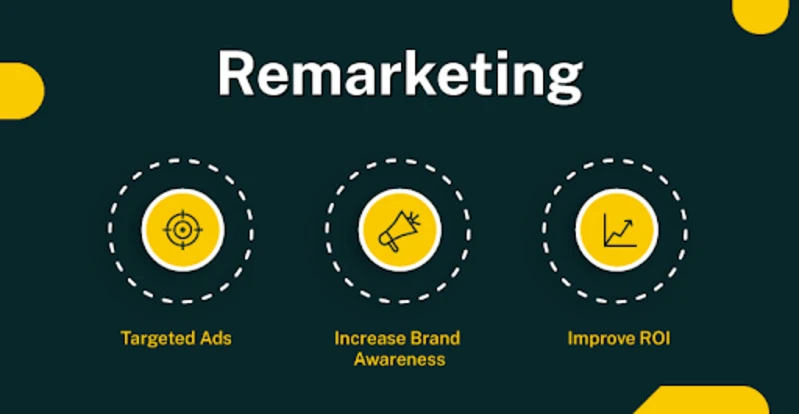
It is a form of online advertising that enables businesses to reach customers who have previously visited their website or app. By targeting these customers, businesses can increase their sales and build loyalty. A remarketing campaign can increase the conversion rate by up to 161%.
Here are some pointers on how remarketing can benefit your eCommerce business:
Targeted Ads
Remarketing allows you to target specific customers who have already shown interest in your products or services. This enables you to tailor your ads to their needs and interests, increasing the chance of a conversion.
Increase Brand Awareness
Remarketing can increase brand awareness by reminding customers of your products and services. This can create a positive association with your brand and encourage customers to return.
Improve ROI
Remarketing can boost your ROI by enabling you to target customers who have already shown an interest in your products and services. This can reduce marketing costs while still achieving a high return.
You can increase sales and improve ROI by targeting customers who have already shown interest in your products or services.
A/B Testing
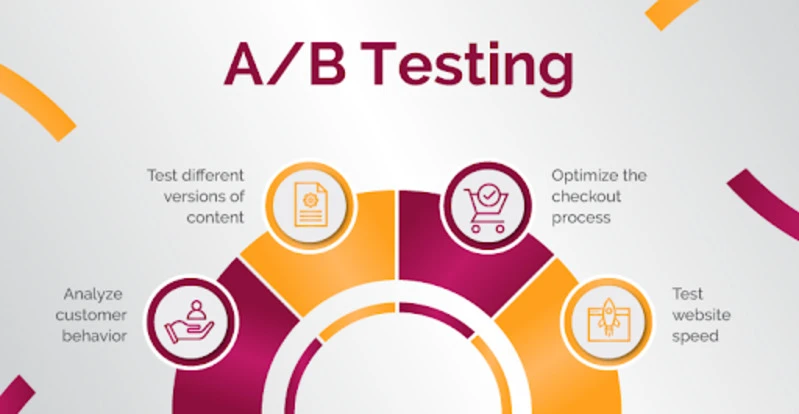
A/B testing compares two versions of a web page or app to determine which one performs better. By testing different versions of your website, you can identify the elements that are working best and make informed decisions about improving your business’s overall performance. According to research, approximately 77% of organizations do A/B testing on their websites.
How to use A/B testing:
Analyze customer behavior
A/B testing can help you gain valuable insights into customer behavior, such as which pages are most popular, how long customers stay on a page, and where they click. This data can inform decisions about optimizing your website design to maximize customer engagement.
Test different versions of content
A/B testing can help you determine which content resonates most with customers. For example, you can test different versions of product descriptions, headlines, and CTAs to see which ones impact conversions most.
Optimize the checkout process
A/B testing can identify areas of the checkout process that could be improved. For example, testing different versions of the checkout page can help you determine which elements are causing customers to abandon their carts and make adjustments to increase conversions.
Test website speed
A/B testing can help you identify opportunities to improve website loading times. By testing different versions of the website, you can identify elements causing delays and make adjustments to improve the overall speed of your site.
By testing different versions of your website, you can identify areas for improvement and make informed decisions about improving customer engagement, conversions, and website speed.

Incentive Programs
Incentive programs provide customers with rewards for their loyalty and can be used to encourage them to make more purchases. These programs can also encourage customers to refer friends and family to your eCommerce business, thus increasing your customer base. Because of loyalty programs, companies see an increase in repeat purchases of 20%. There are a few more things to look at:
Rewards
It is important to consider the rewards that will best incentivize customers to keep purchasing from your store. Common rewards include discounts, loyalty points, and free products.
Redeemable
It is also important to make sure that the rewards are easily accessible and easy to redeem.
Trust
It can also help you to build customer loyalty and trust. Customers who participate in incentive programs will feel their loyalty is valued and appreciated, which can lead to repeat business and positive recommendations to friends and family.
Tracking
By tracking the purchases and activities of your customers, you can gain valuable insights into what they like and don’t like. This can help you to develop better products and services and to create more tailored incentive programs.
You can increase customer satisfaction and boost sales by providing customers with rewards, building customer loyalty, and gaining customer insights.
Analytics

With analytics, you can gain insight into customer behavior and preferences, optimize marketing campaigns, and make data-driven decisions that will improve your business. The best eCommerce development agency always focuses on the analytics part to find the reasons for their success and failure so that they can improve where they are lacking and maintain where they are ahead. Here are some pointers on how analytics can help your eCommerce business:
Track customer behavior
Analytics tools such as Google Analytics allow you to track customer behavior, see what products they’re buying and when, and identify which marketing campaigns are working and which are not.
Optimize business processes
Analytics can help you to identify areas of your business where processes can be optimized, from product delivery to customer service. This will help you to streamline operations and save time and money.
Target marketing campaigns
With analytics, you can target your marketing campaigns more effectively by understanding which customer segments will respond to your messages.
Improve customer experience
Analytics can provide valuable insights into customer preferences, which can help you to develop better products and services and improve the customer experience.
With the right data-driven decisions, you’ll be able to increase sales, improve customer satisfaction, and grow your business.
Content
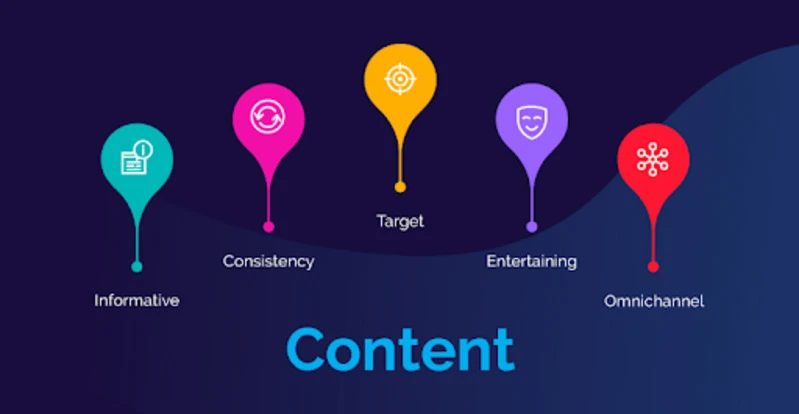
Quality content is essential to any eCommerce business. It can help to drive traffic, increase conversions and elevate your business to the next level. According to research, 61% of online consumers in the United States have made a purchase based on recommendations from a blog. Here are some pointers on how quality content can help businesses:
Informative
Content should be well-researched, informative, and engaging. It should also be optimized for search engines so potential customers can easily find it.
Consistency
Quality content should be available consistently. This means writing regularly and keeping a consistent style across all content.
Target
Content should be tailored to the target audience. This means understanding their needs and interests and creating content that meets them.
Entertaining
Quality content should be entertaining and entertaining. In addition, it should be visually appealing and include visuals such as videos and images.
Omnichannel
Content should be distributed across multiple channels. This means using social media, email, and other channels to reach potential customers and build relationships.
Quality content can drive traffic to your website, increase conversions, and build relationships with potential customers. It can also list your business as an authority in your niche and give customers the confidence they need to purchase from you.
Shopping Experience
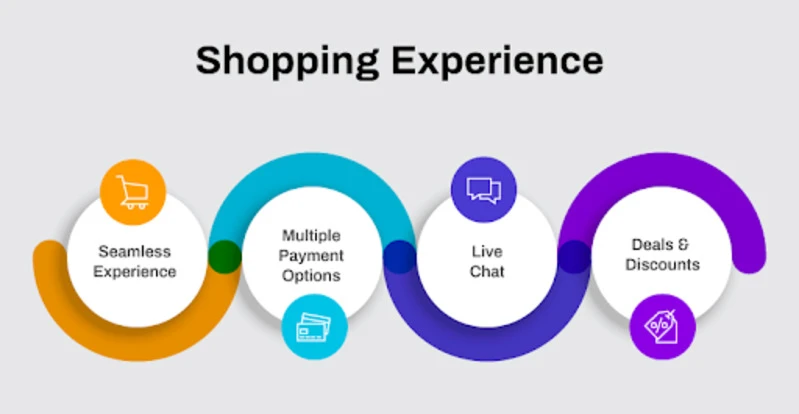
The shopping experience is the key to success for any eCommerce business. It is the customer’s experience that will determine whether they will return to your site or not. According to a study, 76% of customers will stop doing business with a company after only two poor experiences. Therefore, to elevate your eCommerce business, you must focus on improving the customer shopping experience.
Seamless Experience
You must ensure that your website offers a seamless and easy-to-use experience. Customers should be able to find the products they need quickly and easily. You should also ensure that your website is mobile-friendly and responsive. Customers should be able to make purchases on their phones or tablets with ease.
Multiple Payment Options
You should also strive to offer a variety of payment options. For example, customers should be able to pay with a credit card, PayPal, Apple Pay, etc. This will make the shopping experience more convenient for customers and increase the likelihood of them returning to your site.
Live Chat
You should also focus on offering excellent customer service. Customers should be able to contact you quickly and easily with any questions or concerns. Offering a live chat feature can help with this.
Deals & Discounts
You should focus on offering great deals and discounts. Customers are always looking for a good bargain, and offering discounts can help to entice them to make a purchase.
It will result in more customers returning to your site and making purchases, thus increasing your overall revenue.
Customer Survey
Customer surveys can be an invaluable tool for eCommerce businesses to gain customer insights. Companies can understand how customers feel about their products and services by collecting valuable customer feedback and using this data to make informed decisions.
Feedback
Identify the key areas where customers have the most feedback. This could include product selection, customer service, website design and usability, shipping and delivery, and overall satisfaction. Once these factors have been identified, businesses can craft surveys to focus on these areas and get more specific feedback.
Frequency of the surveys
Surveys should be conducted regularly to ensure that customer concerns are addressed in a timely manner. This will also allow businesses to track customer satisfaction levels over time and determine the most effective eCommerce strategy.
Multiple Channels
Utilizing multiple channels such as email, social media, website forms, and in-person interviews. Businesses can get a more comprehensive picture of customer sentiment by collecting feedback from different sources.
Survey Result Analysis
Use the customer survey results to inform their decisions and make necessary changes. This could include revising product selection, refining customer service processes, updating website design and usability, and improving shipping and delivery.
By taking customer feedback into account, businesses can ensure that their customers get the best possible experience when shopping with them.
Product Information
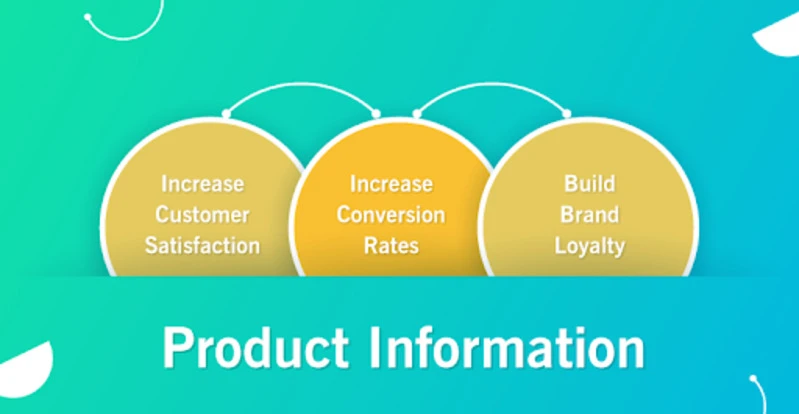
Product information is essential to the success of any eCommerce business. Having detailed, accurate, and up-to-date product information allows customers to make informed decisions and builds trust in the brand. Also, 81% of consumers conduct online research before making an online purchase. Here are some ways product information can help your eCommerce business:
Increase Customer Satisfaction
Detailed product information helps customers quickly find their products and make informed decisions. In addition, providing accurate product descriptions and images can help customers feel confident in their purchase and increases customer satisfaction.
Increase Conversion Rates
Precise and descriptive product information can help customers make more informed decisions, leading to higher sales and better conversion rates.
Build Brand Loyalty
Accurate and up-to-date product information helps customers build trust in a brand. This can lead to repeat customers and increased loyalty to the brand.
E-commerce businesses can improve customer satisfaction, increase conversion rates, and build brand loyalty by providing detailed and accurate product information.
Leverage Automation
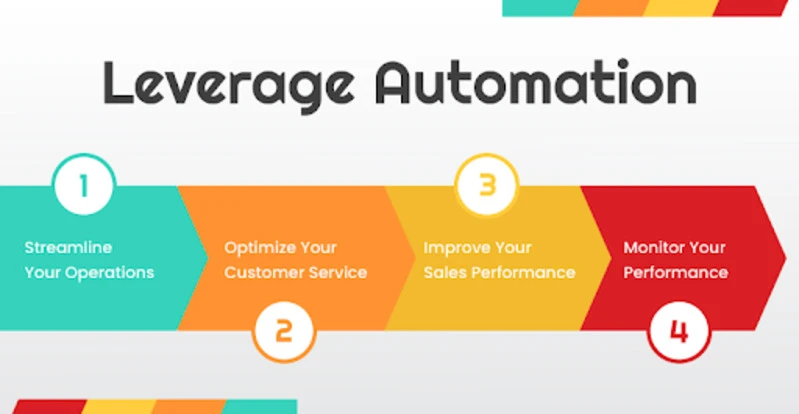
Automation can streamline and optimize your operations, giving you the time and resources to focus on the important aspects of your business. A report says 75% of businesses have added automation to their workflows. Here are some pointers on how to leverage automation to your advantage:
Streamline Your Operations
Automation can help you streamline your operations, allowing you to focus on the core aspects of your business. In addition, automation can help you automate mundane and repetitive tasks so that you can free up time and resources for more important projects.
Optimize Your Customer Service
Automation can help you optimize your customer service. For example, automated customer services tools such as chatbots and automated emails can help you respond to customer queries quickly and efficiently.
Improve Your Sales Performance
Automation can help you improve your sales performance. Automated marketing tools such as email, social media, and retargeting campaigns can help you reach more potential customers and drive more sales.
Monitor Your Performance
Automation can also help you monitor your performance. Automated analytics tools can help you track your performance and identify areas of improvement.
If you are looking to take your eCommerce business to the next level, leveraging automation is a great way to do so.
Competitor Analysis
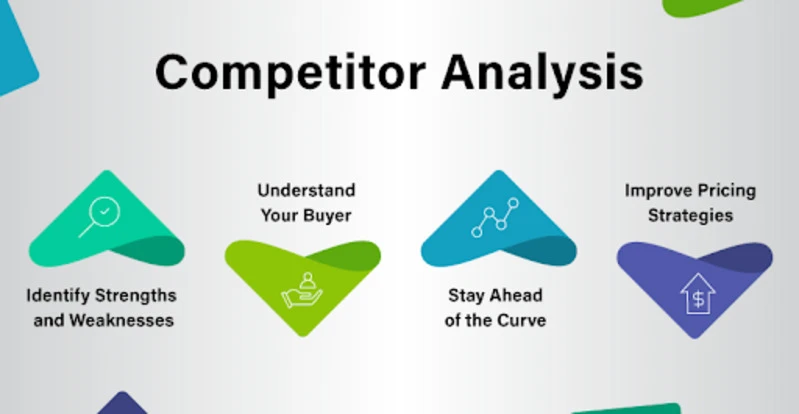
Competitor analysis is an important part of any eCommerce business. Understanding what your competitors are doing and how they are doing it can help you to make better decisions for your own business. In addition, by studying your competitors’ strategies, you can identify areas of opportunity. Here are some of the ways that competitor analysis can help your eCommerce business succeed:
Identify Strengths and Weaknesses
By studying your competitors’ strategies, you can identify the areas where they are doing well and areas that could be improved. This can help you develop strategies that align with your business goals and objectives.
Understand Your Buyer
Competitor analysis can help you understand your buyers’ needs and preferences. You can use this information to improve your product and service offerings to meet your customers’ needs better.
Stay Ahead of the Curve
By studying your competitors’ strategies, you can stay ahead of the game and develop new ideas and strategies to stay ahead of the competition. This can help you to remain competitive in the market and capture more of the market share.
Improve Pricing Strategies
By studying your competitors’ pricing, you can develop better pricing strategies that give you an edge over your competitors. This can help you to increase your profits and reach a wider audience.
By understanding your competitors and using the insights to develop better strategies and pricing, you can take your business ahead and capture more market share.
Reduce Acquisition Cost
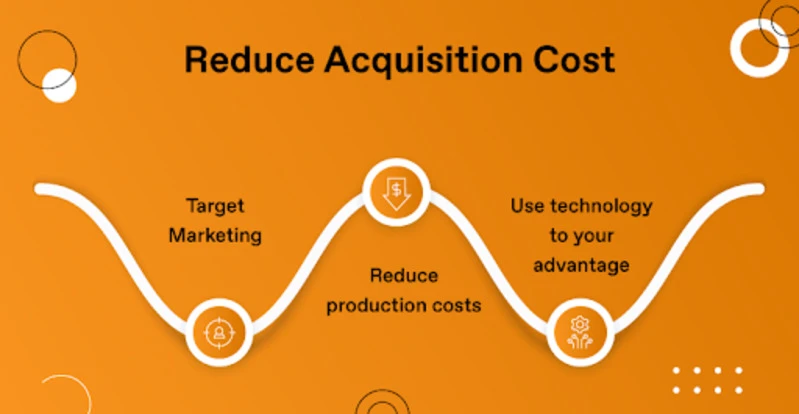
Reducing acquisition costs is essential for any eCommerce business to succeed. With the right eCommerce strategies in place, you can achieve success and maximize profits in the long run. Here are a few pointers to help you reduce acquisition costs and elevate your eCommerce business.
Target Marketing
Use targeted advertisements and content to reach potential customers. This will help you save on marketing costs, as you will only spend on ads that reach the right people. Additionally, customer loyalty programs encourage repeat purchases and reward loyal customers.
Reduce production costs
Use bulk purchasing to reduce the cost of goods and find suppliers that offer discounts for bulk orders. Additionally, consider dropshipping, which allows you to sell products without storing or shipping them.
Use technology to your advantage
Automate inventory management and customer service processes to reduce labor costs. Additionally, use data-driven insights to make more informed decisions, such as which products to buy or customers to target.
With the points mentioned above, businesses can reduce their operating and marketing costs, ultimately saving business owners a lot of money.
Conclusion
Have you ever wondered how to grow an eCommerce business? The answer is simple: Look for a complete solution that satisfies the customers. At this phase, where customers’ choices are changing rapidly, they are hustling to find the perfect combination that can lead them toward the success they have always desired.
The best eCommerce web development practices mentioned above and partnering with top IT services companies will boost your business, and you will also find yourself quite ahead in this race. The future of eCommerce web development is bright and will change the dynamics of businesses. With the right planning and execution, businesses can leverage the power of digital marketing, customer service, and data-based decision-making to create a powerful competitive advantage. If you are looking to take your business to the next level, consider the strategies outlined in this blog post to help you reach your goals.


